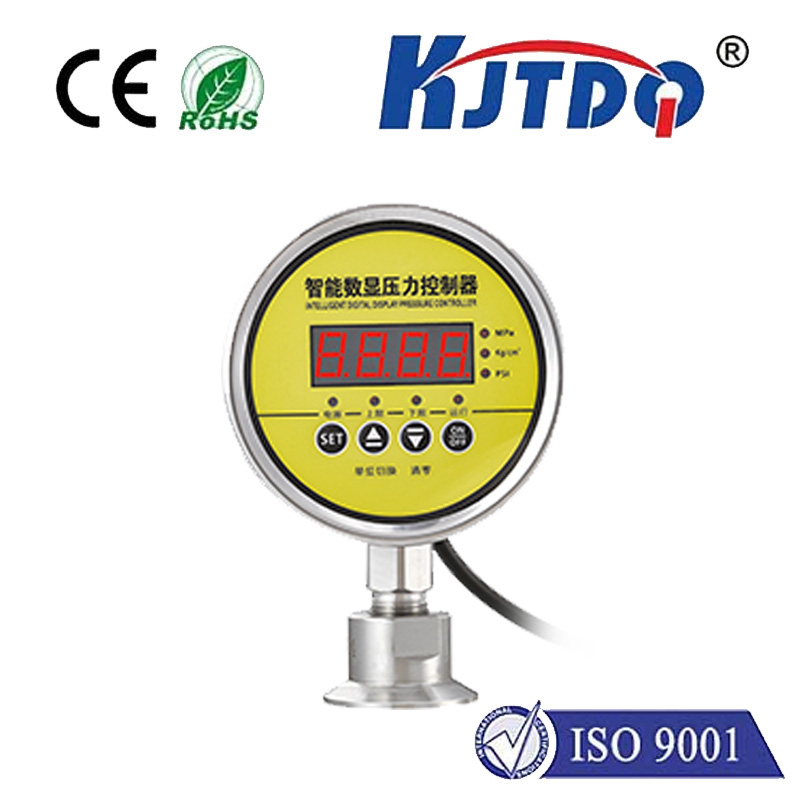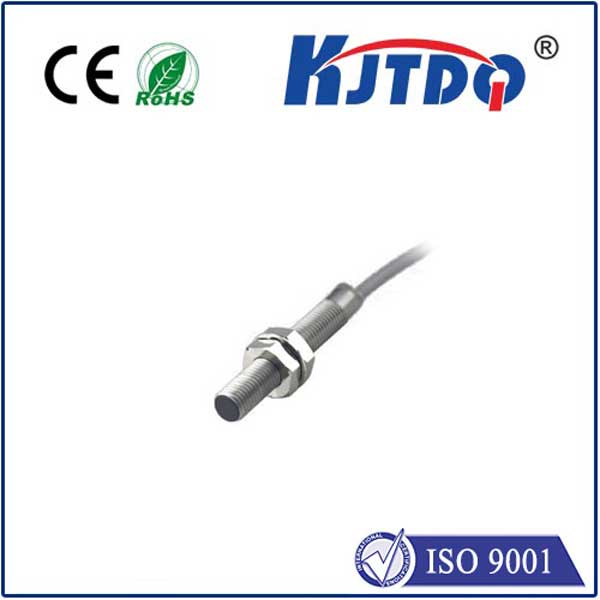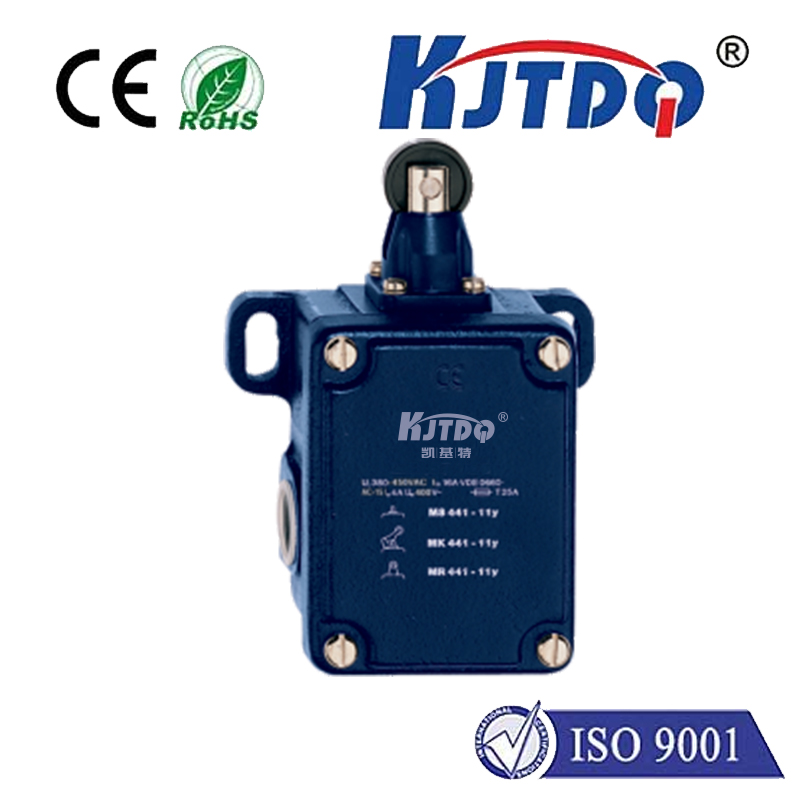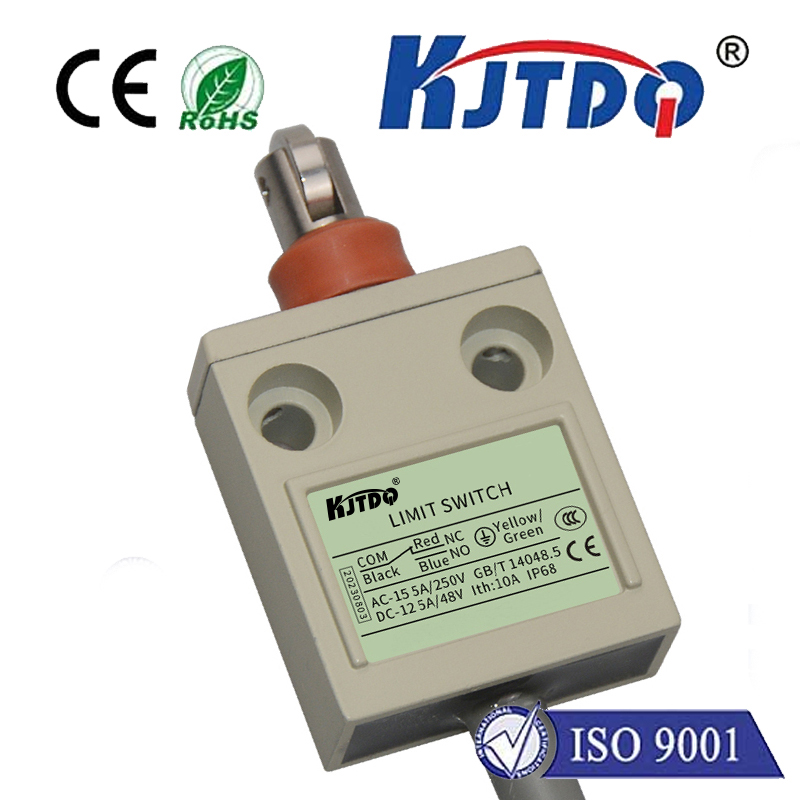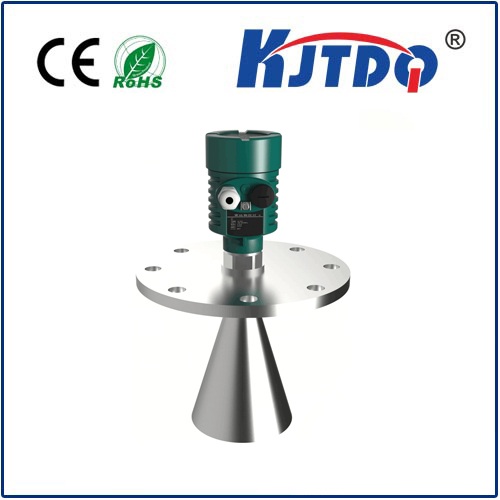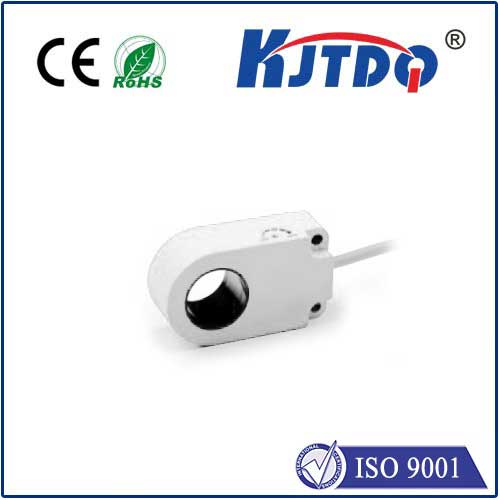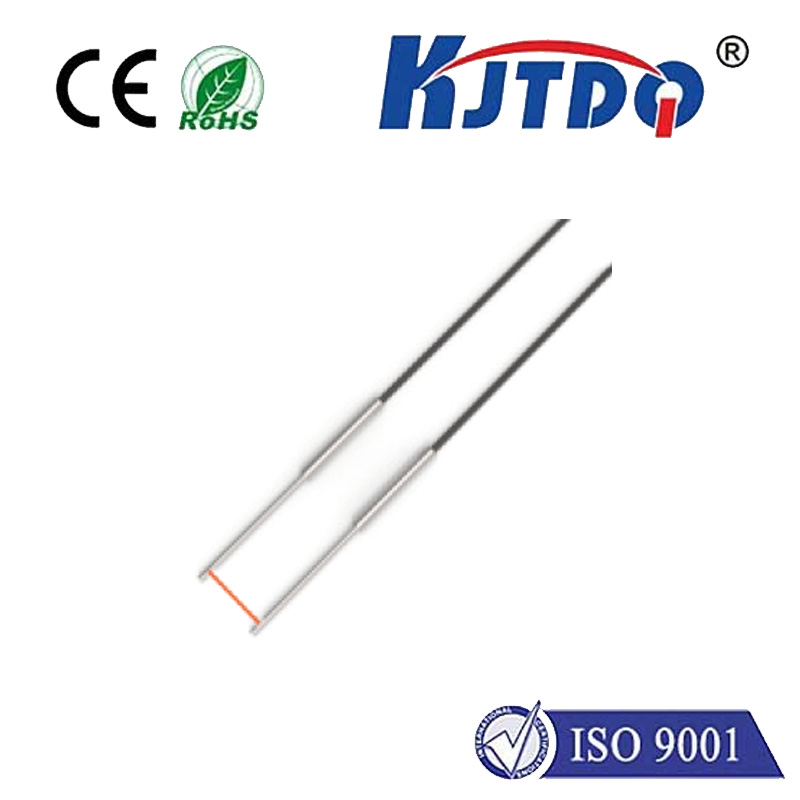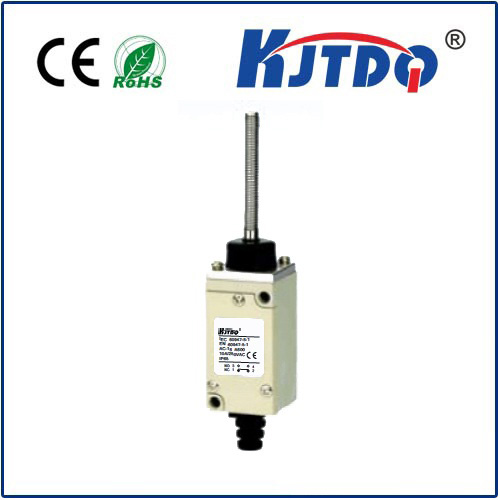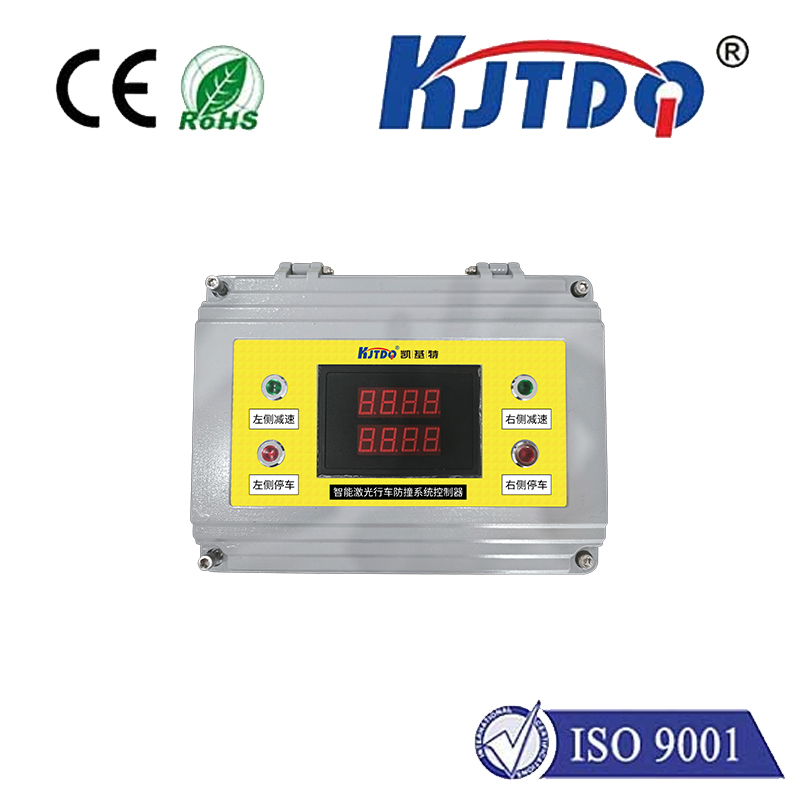fiber optic displacement sensor working principle
- time:2025-08-18 08:29:26
- Click:0
Fiber Optic Displacement Sensors: Working Principles and Precision Applications
How do you measure incredibly tiny movements, often in harsh environments where traditional sensors fail? Fiber optic displacement sensors (FODS) provide a compelling answer. These sophisticated instruments leverage the unique properties of light traveling through optical fibers to achieve high-precision, non-contact displacement measurement. Their core working principle relies on modulating light properties – primarily intensity or phase – based on the distance to a target surface.
Unveiling the Core Principle: Light, Reflection, and Modulation
At their heart, FODS are distance measurement devices. They function by directing light from a source (like an LED or laser diode) down one or more transmitting optical fibers towards a target surface. The light reflects off this surface, and a portion of the reflected light is captured by receiving optical fibers, guiding it back to a photodetector. The fiber optic sensor working principle hinges critically on how the characteristics of this returned light change predictably with the distance (displacement) between the fiber probe end and the target.
Key Components Enabling Operation:

- Light Source: Generates the optical signal (LEDs for cost-effective solutions, laser diodes for higher precision and resolution).
- Optical Fibers: Transmit light to the target and collect the reflected light. The specific arrangement of transmitting and receiving fibers is crucial to the sensor’s response curve. Common configurations include bifurcated bundles (transmit and receive fibers side-by-side) or single fibers with external beam splitters.
- Photodetector: Converts the returned optical signal into an electrical signal proportional to its intensity or other modulated properties.
- Signal Processing Electronics: Amplifies, conditions, and interprets the electrical signal from the photodetector to determine the measured displacement.
Dominant Operating Principles Explained:
While variations exist, two primary working principles dominate FODS technology:
- Intensity-Modulated Displacement Sensors:
- Principle: This is the most common and often cost-effective approach. The intensity (brightness) of the light received back by the photodetector varies with the target distance. This variation occurs due to changes in:
- Spot Size & Light Collection: As the target moves relative to the probe end, the size and focus of the light spot on the target changes. Crucially, the angle at which reflected light enters the receiving fibers also changes dramatically. This significantly alters the amount of reflected light captured and guided back.
- Reflectivity: The target’s surface properties and color impact the amount of light reflected.
- Response Curve: This type produces a characteristic “hill-shaped” response curve. Intensity increases as the target approaches an optimal distance where light coupling into the receiving fibers is maximized. Intensity then decreases if the target moves closer still or further away. Sensors are typically operated on the linear slope of this curve for predictable measurements. Calibration against known standards is essential, especially as target reflectivity significantly influences the output signal.
- Advantages: Simplicity, lower cost, good resolution in the linear range, relatively fast response.
- Limitations: Sensitivity to target reflectivity and surface condition, limited stand-off distance (range), inherent non-linearity requiring careful setup.
- Interferometric (Phase-Modulated) Displacement Sensors:
- Principle: These sensors offer ultra-high precision, often down to the nanometer or even sub-nanometer level. They rely on interference between two light beams: a reference beam and a measurement beam reflected from the target surface.
- How Interference Works: When these two coherent beams recombine, they interfere constructively (bright) or destructively (dark) based on the difference in the path lengths they have traveled (optical path difference). Displacement of the target changes the path length of the measurement beam, causing a shift in the interference pattern (fringes).
- Common Configurations:
- Intrinsic Fabry-Perot (FP): The interferometer cavity is formed within the fiber itself or between the cleaved fiber end and the target. Target displacement changes the cavity length, altering the interference condition.
- Extrinsic Fabry-Perot Interferometer (EFPI): The cavity is formed between the end of the fiber and an external reflective surface (the target). Changes in target distance directly modulate the interference pattern sensed within the fiber.
- Michelson & Mach-Zehnder: Light is split at a coupler, travels down separate paths (reference and measurement arms), then recombines. Displacement in the measurement arm alters the interference.
- Signal Interpretation: Sophisticated techniques (like phase demodulation, wavelength scanning, or white-light interferometry) are used to accurately track the interference phase shift and convert it into a displacement measurement.
- Advantages: Exceptional resolution and accuracy, absolute measurement capability (with certain techniques like white-light interferometry), potentially larger stand-off distances than intensity sensors, less sensitivity to absolute light intensity fluctuations.
- Limitations: Higher complexity and cost, greater sensitivity to environmental factors like temperature and vibration affecting the reference path, requires coherent light sources (lasers).
Why Choose Fiber Optic Displacement Sensing? Key Advantages
The unique fiber optic sensor working principle translates into compelling benefits for demanding applications:
- Non-Contact Measurement: Eliminates issues like friction, wear, and loading on delicate targets.
- High Precision & Resolution: Capable of sub-micron or even nanometer resolution, especially with interferometry.
- Small Size & Flexibility: Probe ends can be very small and flexible fibers allow access to confined or complex spaces.
- Immunity to Electromagnetic Interference (EMI): Optical signals are immune to radio frequency (RFI) and electromagnetic fields, ideal for noisy industrial environments (e.g., near motors, welders).
- Intrinsic Safety: No electrical signals at the probe tip, safe in explosive or flammable atmospheres (ATEX compliance possible).
- Wide Temperature Range: Capable of operating in extreme temperatures where electronics might fail.
- Fast Response: Ability to measure high-frequency vibrations.
Putting Principles into Practice: Common Applications
The unique capabilities of FODS make them indispensable across many fields:
- Industrial Automation & Manufacturing: Vibration monitoring of machinery, precision position control in robotics and CNC equipment, runout measurement of rotating shafts, part dimensioning and quality control, micromachining feedback.
- Aerospace: Structural health monitoring (SHM) of aircraft components, gap and displacement measurement in engines and airframes under thermal cycling.
- Automotive: Testing engine components (valve lift, crankshaft motion), brake pad wear sensors, suspension testing.
- Medical Devices: Precision position feedback in surgical robots, micro-manipulators, and biomedical research equipment.
- Civil Engineering: Monitoring structural deformations (bridges, dams, buildings) and crack propagation.
- Research & Development: Material testing (strain, creep), micro-positioning stages, MEMS device characterization, acoustic emission sensing.
Understanding the fundamental fiber optic sensor working principle – whether based on modulating light intensity or exploiting the precision of optical interference – unlocks the potential of these remarkable devices. Their ability to deliver precise, non-contact displacement measurement in challenging environments makes them a powerful tool for engineers, scientists, and technicians pushing the boundaries of measurement and control. Choosing the right principle (intensity vs. interferometric) depends heavily on the specific requirements for resolution, range, target properties, environmental conditions, and budget.












